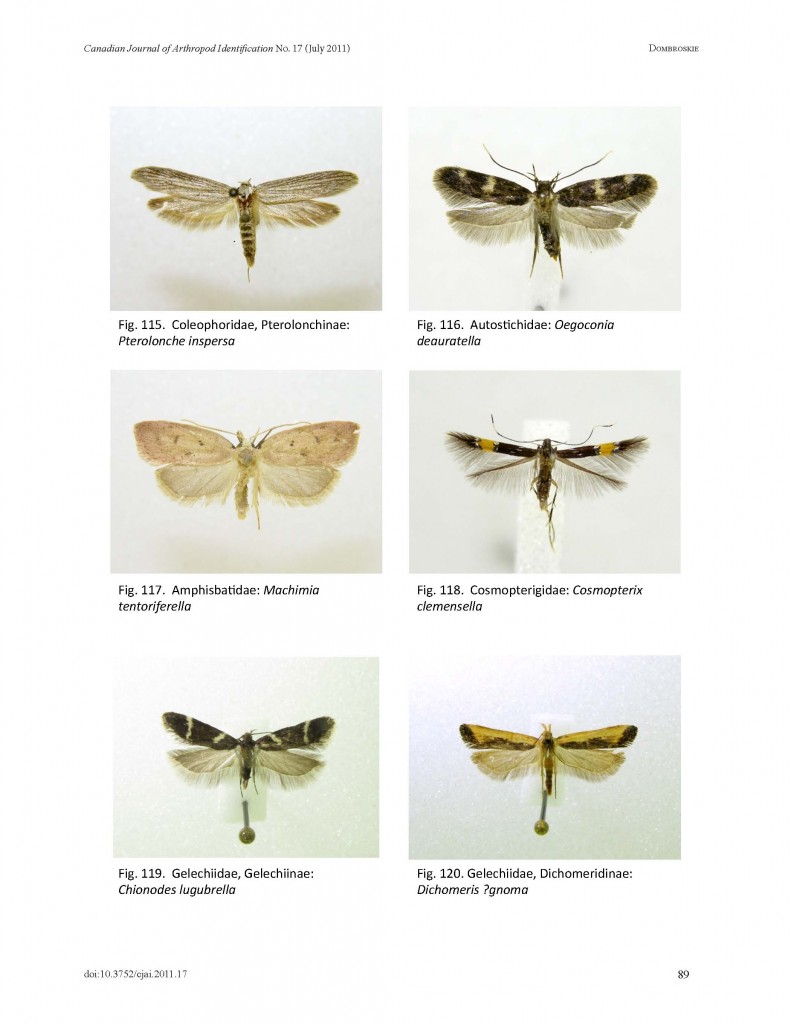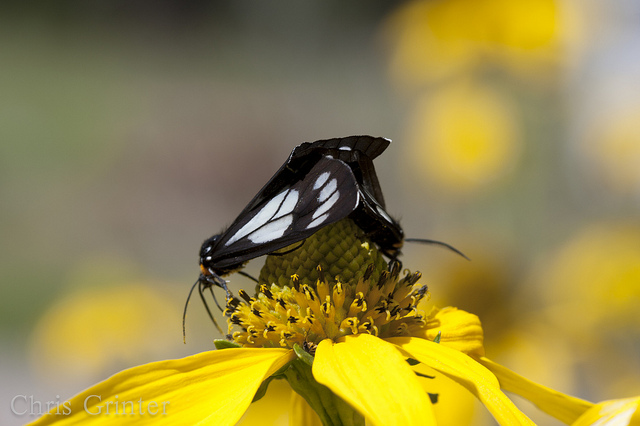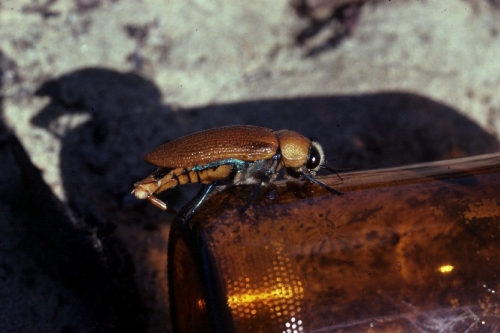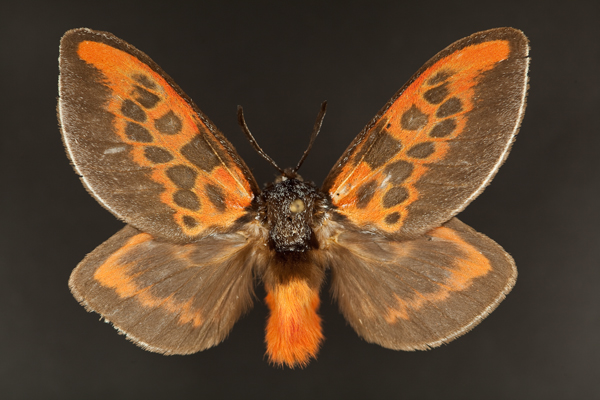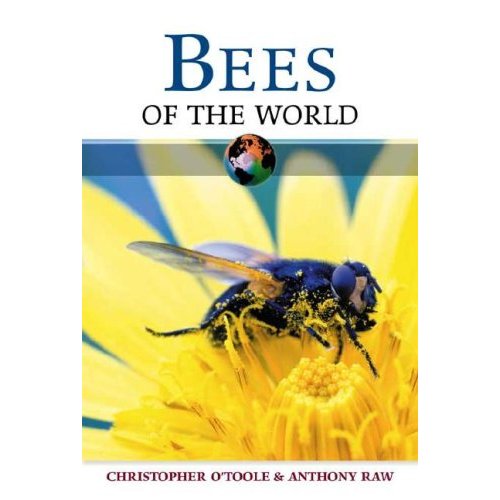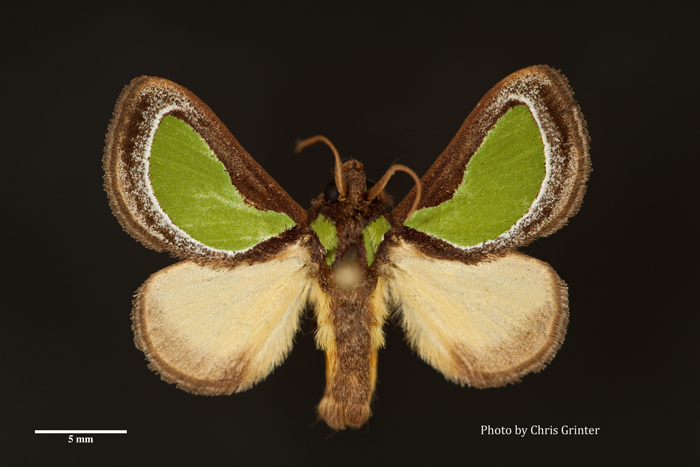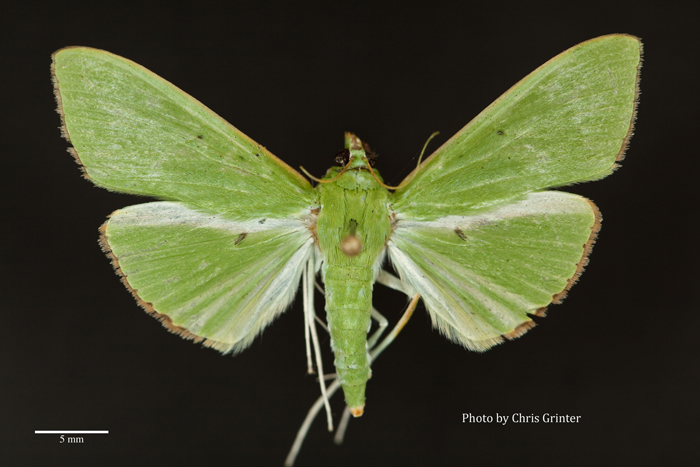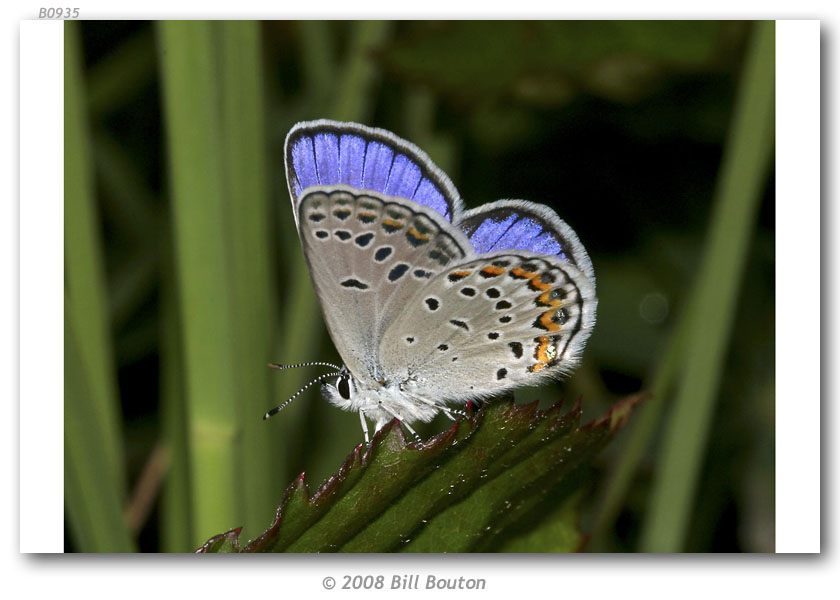Prije nekoliko mjeseci veličanstveno ključ za Lepidoptera iz Kanade (svi oni) objavio je Jason Dombroskie – PhD student iz U. Alberta. Program je dostupan za Windows korisnike samo da nisam imao dobru priliku da ga istražite, ali – ali PDF je dostupan na internetu i pokriva isti materijal. Svi poznati kanadski Lepidoptera uključeni su u ovaj ključ, a većina ih se svodi na podporodicu ili čak pleme! Ima 222 svojte, 73 likovi i 266 stanja karaktera koja pomažu suziti stvari. Ovo je prva referenca te vrste koja točno i potpuno pokriva faunu cijele zemlje i prva koja koristi dobro ilustrirani i interaktivni ključ. Iznenađujuće je koliko su lepsi dobro poznati, a koliko malo dobrih referenci postoji, gotovo nijedan od njih nema upotrebljiv ključ. Za sve koji su se prije mučili identificirati lepsove, ovo će biti nevjerojatno koristan izvor. Dodijeljeno, vjerojatno postoji nekoliko američkih moljaca koji bi mogli baciti ključ u tok stvari, ali uglavnom sumnjam da će biti mnogo problema.
|
Ovaj ponedjeljak moljac je Arctiinae, Gnophaela vermiculata. These beautiful day flying moths were abundant on yellow Helianthus flowers around 9000′ u Nacionalnoj šumi Santa Fe, Novi Meksiko. Gusjenice se hrane zvončićima, ali odrasli preferiraju najkvalitetniji izvor nektara na tom području – which fortunately makes for easy and attractive photo subjects. Today marks a sad day in Physics history, the Tevatron accelerator at Fermi Lab in Batavia Illinois was powered down for the last time. Once the second most powerful accelerator in the world (and most powerful in the USA), the new LHC has made this beautiful machine obsolete. I can only assume the teams of scientists working at Fermi were hopeful for further funding, but the grand ol’ days of big-budget physics was crushed by congress in 1993 with the cancelation of the SSC. Off to Europe our physicists go! I have many fond memories of visiting Fermi with my grade school science class. Every year Mr. House would take us to explore the physics and nature surrounding the lab. I recall a feeling of privilege when you visited a real working lab where there were no public displays with cute goggly-eyed atoms, just chalk boards full of Feynman diagrams and 3 day old cups of coffee. But it was probably the fully restored big bluestem prairie that grew on and around the 4 mile collider ring was where I had the most fun and is what left a lasting impact on my scientific career. And so it goes, the evolution of science in the US. I have noticed this particular trend: 1) An active science facility with lots of research has a tiny museum for public tours. 2) The research loses funding and the tiny museum takes over. 3) The museum is renovated to be more “family” friendly and “interactive”, while science is pushed into the basements. 4) Whatever scientists are left (or students hired to act like scientists) are put under glass for the public to watch like strange creatures; all while true research fades into memory. The 2011 Ig Nobelova Ceremonija je održana jučer u Harvarda Sanders Theatre. Nagradu sponzorira nevjerojatnog istraživanja, organizacija koja okuplja fascinantno, neparan, i iskreno smiješan istraživački radovi koji trijumf ideja da nisu svi znanost je dosadno. Među ovogodišnjim uglednim dobitnicima bio je kolega entomolog i bloger David Rentz, koji je dobio IgNobel iz biologije za a otkriće u 1983 s kolegom Darryl Gwynne u australskoj unutrašnjosti. Na njihovo veliko iznenađenje, određeni stil smeđe boce s udubljenjima na dnu (“kockasti”) pokazao se neodoljivim za mužjake buprestidne bube
Čestitamo Daveu i Darrylu!
[youtube kZyIN23Cy4Y 480 360] The microscopic insect world is a very different one from ours and we rarely are given glimpses into it. Thanks in part to the impressive Phantom camera system and the Flight Artists project researchers have filmed the minute (1mm!) Trichogramma wasp (Chalcidoidea) in flight. These insects are egg parasites of Lepidoptera (amongst other groups undoubtedly) and can be used as effective biocontrol agents. As you’ll see in the video it’s been long understood that these wasps hitchhike on adult Lepidoptera waiting for fresh eggs, but it wasn’t know how they got there and if they were even flying onto the adult hosts. Stunningly, this wasp flaps its wings at ~350 times per second to achieve some astounding feats of movement. The biomechanics of this wing mechanism must be fascinating. Scroll ahead to 1:07 and watch the interaction of the two wasps – the one that flips off to the left of the screen moves in such a bizarre way it looks like bad CGI. I sure hope they record more species of minute flying insects!
Ovog ponedjeljka je zapanjujuća ženka Neotropical Megalopygidae – Pretvorite nigrorufa. Ed Ross i Ev Schlinger prikupili su ovaj primjerak u Peruu u 1955, i čuo sam mnoge priče o tim epskim ekspedicijama. Ne mogu zamisliti da putujem teretnim brodom, being gone for six or more months at a time and relying mostly on hand written correspondance. It must have made the world feel like a much larger place than it is today. This is a pretty epic fail. I guess the “young adult” publishing guidelines are less strict with “facts”.
Thanks to Richard Lee Brown for first posting this on Facebook.
Svi smo vidjeli danas dolazi, porast od leptira, Dan im se osvećuje nama. Nema više će se pasivno letjeti oko njihovih staništa kao što su bulldozed za centrima i zagađeni s istjecanjem. Jedan posebno ljut Karner Blue se podnio pismo Luku upozoravajući nas da je naše vrijeme gotovo. Ugrožene male Lycaenidae će se uhvatiti za ruke i doći za nama neke mirne noći dok spavamo u svojim krevetima. Mi u Lepidopteristima’ Društvo je čak napravilo svoju listu za nepoduzimanje mjera. Zajedno trebamo djelovati prije nego što bude prekasno – udarimo preventivno prije uspona bluesa. Spasite svoje obitelji! Zapalite te posude od stiropora, popločati prerije, vozite svoja terenska vozila i zauzmite stav protiv ovih lepršavih fanatika! (ili bismo samo mogli spasi ih…) There has been a continuing discussion over the last few years of why so few women remain in science. While I’m not going to dive into that topic here, you can find great discussions ovdje, ovdje, ovdje i ovdje. I don’t however think anyone argues about why women don’t enter science in the first place, especially when you see things like this. Way to print that soul crushing stereotype right on the front of your daughters shirt, JCPenny. (preko Skepchick) |
Skepticizam |
